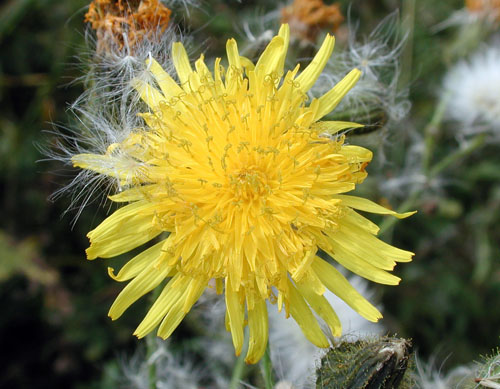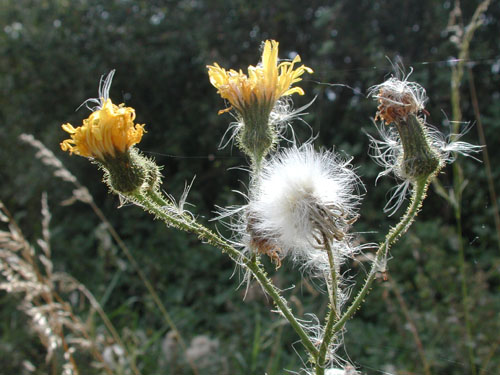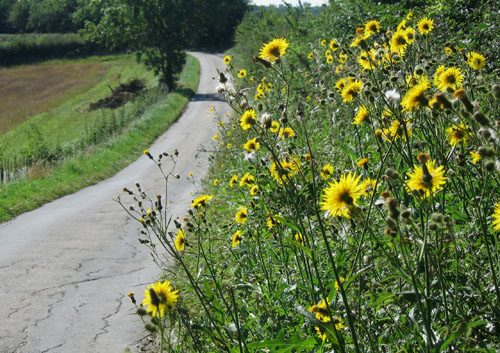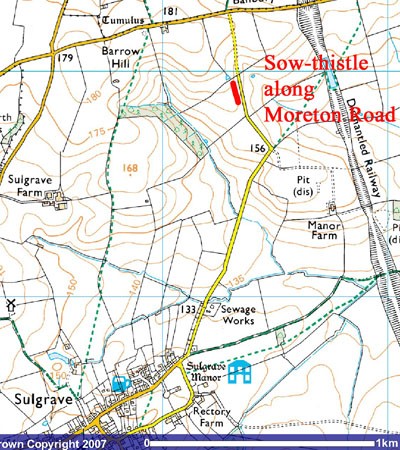
FLOWER OF THE MONTH - SEPTEMBER 2007
(Home)
PERENNIAL SOW-THISTLE (Soncha arvensis)
(also known as CORN SOW-THISTLE)



Sow thistle along the Moreton Road verge
There are many plants of the daisy family with yellow dandelion-like flowers, variously categorised as sow-thistles, catsears, hawkbits, hawkweeds or hawkbeards. Identification can therefore sometimes be confusing. The Perennial sow-thistle is one of the tallest, often reaching 4 feet in height. The showy flowers are some 2 inches across, in loose clusters, appearing from mid-summer on into the autumn. The leaves too are rather like those of the dandelion, but they clasp the stem and are edged with soft spines. The stem if broken can emit a milky juice. The plant is commonly found on waste ground or road verges.
The young leaves of sow-thistles may be eaten as vegetables (but first the spines must be trimmed off!). The Roman author Pliny wrote that Theseus dined off a dish of sow-thistles before going off to kill the Minotaur. Others were less enthusiastic about it, calling it “hare’s lettuce”, describing how the hare “when fainting with the heat….recruits her strength with this herb”. The botanist Richard Mabey however says that the corn sow-thistle is the best of all the members of the daisy family, “fleshier and milder than the dandelion”.
Note: For much of the information about Flowers of the Month, I am indebted to Richard Mabey, whose excellent and fascinating “Flora Brittanica” and “Food for Free” can be recommended.

Image produced from the Ordnance Survey Get-a-map service.
Image reproduced by kind permission of Ordnance Survey
and Ordnance Survey of Northern Ireland.
Text by George Metcalfe. Photos by Colin Wootton.